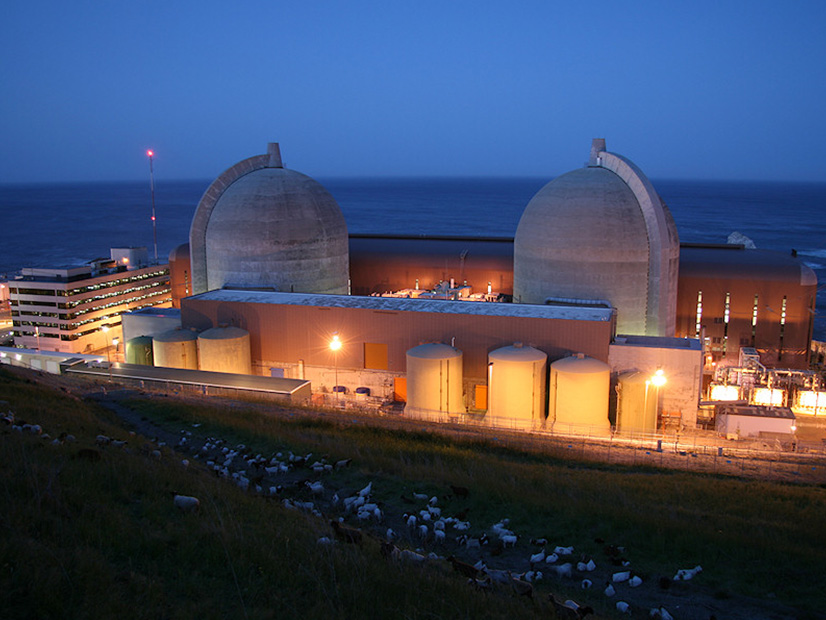
The planned closure of California's last nuclear plant at Diablo Canyon is prompting reliability concerns.
| PGEThe California Public Utilities Commission proposed Friday requiring electric providers to procure 11.5 GW of new resources between 2023 and 2026 to meet the state’s reliability needs and bolster its transition to 100% clean energy.
The proposed decision cited the need to avoid capacity shortfalls like those that caused rolling blackouts in August and energy emergencies in September during severe heat waves. (See CAISO Could See More Outages this Summer)
“This procurement order is designed to achieve our ambitious greenhouse gas emissions reduction targets for 2030 and to keep us on a clear path to meeting our ultimate goal of 100% zero-carbon electricity resources by 2045,” it said.
In a divergence from most state policies, the proposal would require load-serving entities (LSEs) to include more fossil fuel generation in their resource mixes by adding 1,000 to 1,500 MW in additional capacity from efficiency improvements and expansions at existing natural gas plants.
Clean energy advocates objected to that component, but the CPUC said the state can meet its long-term clean-energy goals while using fossil fuels to support reliability in the next five years.
“The middle of this decade represents an inflection point and a transition; we need to make it through successfully in order to realize our goals,” Administrative Law Judge Julie Fitch wrote. “The potential for a destabilized electric grid and unreliable service if we fail to plan appropriately for the transition is a very serious threat to our ability to realize our long-term goals.”
The proposal would require LSEs, including community choice aggregators and the state’s three investor-owned utilities to procure — in proportion to their share of load in CAISO — 3,000 MW by 2023, another 4,500 MW by 2024, 2,000 MW by 2025, and an additional 2,000 MW by 2026. Batteries, longer-duration energy storage, solar, wind and other renewables would make up 90% of the new resource mix.
New capacity in 2023-25 would replace 2,280 MW from the state’s last operating nuclear generator, Pacific Gas and Electric’s (NYSE:PCG) Diablo Canyon Power Plant, which is scheduled to retire in 2024-25.
“We are specifically ordering that the resources from Diablo Canyon be replaced with at least 2,500 MW of firm, zero-emitting resources,” the proposed decision says. “We also expect that almost all of the resources procured pursuant to this order will be zero-emitting.”
The firm, zero-emitting resources are expected to be renewables paired with storage that can deliver power 5 to 10 p.m. every day.
The state will also lose 4,200 MW of capacity from retiring natural gas plants, including 3,700 MW from four once-through-cooling plants that the state ordered to close by the end of 2023. (See OTC Plants to Remain Open, Calif. Water Board Rules.)
Resources intended to come online in 2026 must be long-lead-time resources, including geothermal generation and long-duration storage, the proposal says.
An alternate decision proposed by CPUC Commissioner Clifford Rechtschaffen differs from the main proposal by requiring procurement of 500 MW of conventional fossil-fueled generation by PG&E, Southern California Edison (NYSE:EIX) and San Diego Gas & Electric (NYSE:SRE) under a set of conditions that include a five-year time limit on the units’ operation.
His plan would authorize the IOUs to procure another 300 MW of thermal resources that commit to using green hydrogen, in part.
The CPUC plans to vote on the proposed decision and Rechtschaffen’s alternate at its June 24 meeting.


